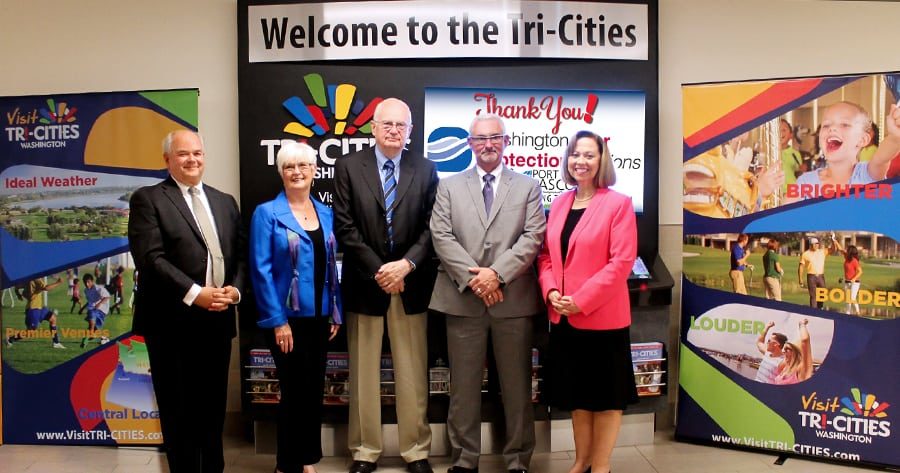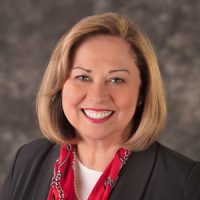
Home » Visit Tri-Cities to kick off nationwide search for new CEO
Visit Tri-Cities to kick off nationwide search for new CEO

December 13, 2017
Retiring president hopes successor leads efforts on water taxi system, science tourism
A nationwide search kicks off this month to replace the longtime leader of Visit Tri-Cities.
Kris Watkins, president and chief executive officer of the agency that promotes the region as a destination for visitors, announced her retirement last month.
“It’s very difficult to leave after 24 years because it’s a job I have loved. I have focused a lot of energy on the tourism industry, but it’s been a great journey,” she said.
The position will be posted in mid-December and will be advertised nationally in industry publications.
A selection committee has been formed that includes incoming and past Visit Tri-Cities board chairs, three city managers, two hoteliers and board members.
 Kris Watkins,
Kris Watkins,Watkins said the group hopes to conduct interviews by the end of January and name a successor by late February or early April.
A precise salary has yet to be set, as Watkins said it will be based on the selected candidate’s qualifications.
Watkins said the selection committee will be looking for candidates with a lot of experience. “This will pay off in the long run in bringing visitors in,” she said.
The ideal candidate will be one who’s been in the industry, knows how to raise money, possesses good business acumen and strong public relations experience and preferably has a background in product management and marketing.
“Tourism is a business,” Watkins said. “It is economic development and it takes a lot of focus and the community needs to keep supporting tourism and tourism-related economic development. It’s the cities’ and (businesses’) memberships that will take it to the next level.
“I would recommend the new president roll up their sleeves and come up with a strategic vision and plan, then revisit it every five years. That was my strategy. Pick one to two projects to work on each year, and stick with it until they’re finished or ready to be handed off.”
Watkins’ advice to the new president and CEO: “You have to be the biggest cheerleader, but also the biggest business person and up on marketing and sales. We compete with destinations throughout the Northwest. There are many layers to the job, and you have to be a good coordinator.”
“It’s more a way of life than a regular job,” she added.
Watkins plans to remain on board until the end of first quarter in 2018 to oversee the leadership transition.
“I will be with (the new president/CEO) every step of the way to make sure it’s a smooth transition,” she said.
When Watkins started in 1994, she had a $194,000 budget and 90 dues-paying business members.
Today, she oversees a $2.4 million budget and 812 members — the second largest tourism agency in the state only to Seattle.
“I will miss the staff and volunteers,” Watkins said. “They have been fabulous to work with.”
Watkins said she’s very optimistic about the future of the Tri-Cities and the tourism industry.
“We have reached critical mass,” she said. “In a decade, I hope we have an organization two times the size, which would mean the tourism industry is doing really well.”
In addition to wanting to see ongoing growth of the wine sector and efforts to put Tri-Cities on the map at the interstate and national level, Watkins has a couple of ideas she hopes the new president/CEO will see through to fruition.
One vision is to continue to capitalize on the possibilities the river and shoreline have to offer. Watkins explained the concept of a water taxi system to convey foot traffic, cyclists and buses to major sites throughout Tri-Cities, serving as a new way to recreate and connect visitors and residents to Tri-City resources.
“We need to continue to draw on our shorelines. There are very few places in the country and the world where they have three major rivers converging and the weather to complement it,” Watkins said.
She also identified science tourism as the next big idea to develop in the Tri-Cities’ repertoire of attractions.
Science tourism is the blending of science, technology, education and mathematics with the visitor experience to create an attraction that will increase visitor spending.
“If you can find a niche that no one else is doing — nowhere else in the world, to my knowledge — and package that and make it a very educational but fun experience, you can go a long way,” Watkins said.
“The Tri-Cities is a unique place where science, industry, wineries and agriculture and the arts come together,” according to an eight-page Visit Tri-Cities paper on the subject.
And science tourism wouldn’t be limited to the Manhattan Project sites, the Laser Interferometer Gravitational-wave Observatory or the Bechtel National Planetarium.
“Consider the science of golf, focusing on the physics of a golf swing, the chemistry required to craft an award-winning wine, the technology and science used by the agricultural industry,” the paper stated.
“It keys into our brand of a ‘bolder, brighter future,’” Watkins said. “If we focus on science tourism like we have the rivershore and sports council, we can take Tri-Cities to a whole new level in terms of visibility.”
Watkins made her start with the Tri-Cities Visitor and Convention Bureau after serving as the project manager of the Canyon Lakes development. It was through that experience she realized the value of the tourism-business connection.
“Tourism helps build business; it helps businesses to meet their bottom lines. People coming in are spending a lot of money — $444 million — a huge impact. That’s what got me to be a believer,” she said.
Watkins has had the opportunity to be a part of several major shifts in Tri-Cities’ tourism profile.
One of her first accomplishments was co-founding Leadership Tri-Cities when she began her role in 1994. The year-long leadership program develops and educates a diverse group of skilled leaders who will be catalysts for positive change in the community.
In 1995, she formed the Tri-Cities Rivershore Enhancement Council, which spearheaded projects like the completion of the Sacagawea Heritage Trail, the six-foot levee reduction and establishment of the Playground of Dreams and Family Fishing Pond in Columbia Park.
In 1996, Watkins formed the Tri-Cities Sports Council, which has been the catalyst in attracting and promoting sporting events to the area — comprising a substantial portion of tourism revenues for the region.
In 2000, she helped bring the Three Rivers Convention Center into being and assisted in making the Reach museum possible.
In 2004, she worked with Spokane to get legislation approved for the Tourism Promotion Area Assessment, which approved a $2 per night assessment on all occupied guest rooms in the region. This move increased Visit Tri-Cities revenues by 60 percent.
In 2007, she co-founded the Washington State Tourism Commission and served as its first president.
In 2014, she helped obtain legislation for the formation of the Manhattan Project National Historical Park.
In 2015, she led the formation of the Tri-Cities Wine Tourism Council.
As Watkins pivots toward retirement, she said she looks forward to having more time to travel with her husband.
“I want to stay very involved in the community, but I want to be able to travel more,” she said.
Watkins said she aspires to visit at least one new far-flung locale per year, and is investigating what shape her future work in economic development will take.
Local News Year in Review
KEYWORDS december 2017




